Look, friends, whether you believe it or not, surge protectors are very important. Nowadays, most electronic devices come with built-in surge protection, but it’s still a good idea to use an additional surge protector for extra protection. A surge protector is mandatory for electronic devices like TVs, PCs, laptops, music systems, etc. There are different types of surge protectors used for different purposes. Today, we’ll talk about surge protectors from A to Z. Generally, when we talk about surge protectors, we usually think of power strip surge protectors or outlet protectors. But besides these, there is also a panel-mounted surge protector that is installed in the distribution box of the house, and it can also be installed on the switchboard. These are called SPDs or surge protection devices.
Also Read: Tube Tyre Vs Tubeless Tyre: What are the Advantages & Disadvantages
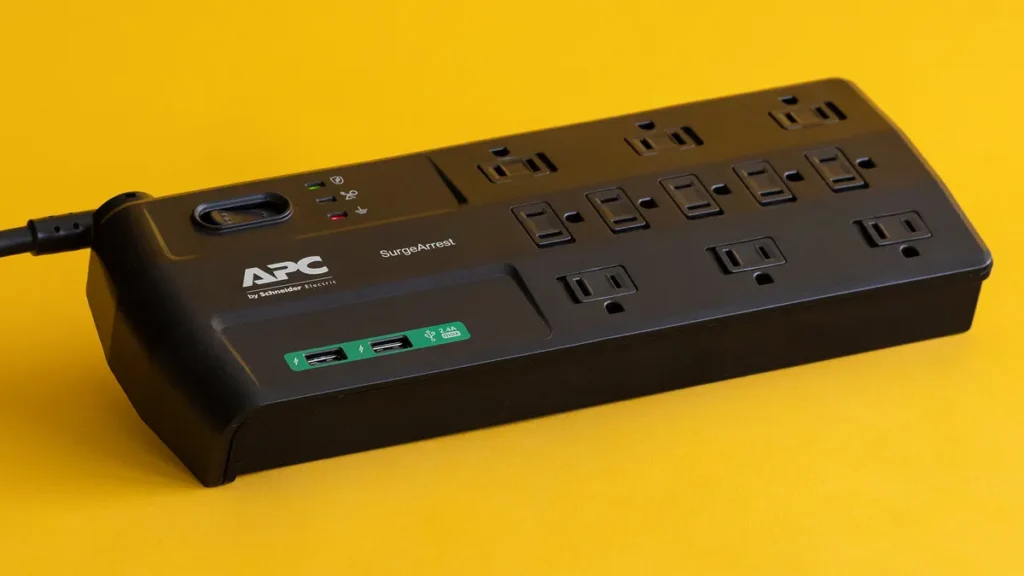
What is Surge?
Now, when electricity is generated in power plants, it is generated at a certain voltage. Then it is converted to very high voltages to facilitate transmission. When electricity reaches substations and powerhouses, the voltage is reduced so that it can be distributed to different homes and factories.
Wherever electricity is needed, a constant voltage is sent, such as 220 volts for homes and 440 volts for factories, and sometimes even higher.
Now, let’s talk about our homes. Let’s say your home receives 250 volts, and for some reason, the voltage suddenly increases to 300, 800, or even a few kilovolts for a few milliseconds or nanoseconds. This is what we call a surge. You can see a graph here, which will help you understand. If voltage spikes occur for a few nanoseconds or milliseconds, we call it a surge or power surge.
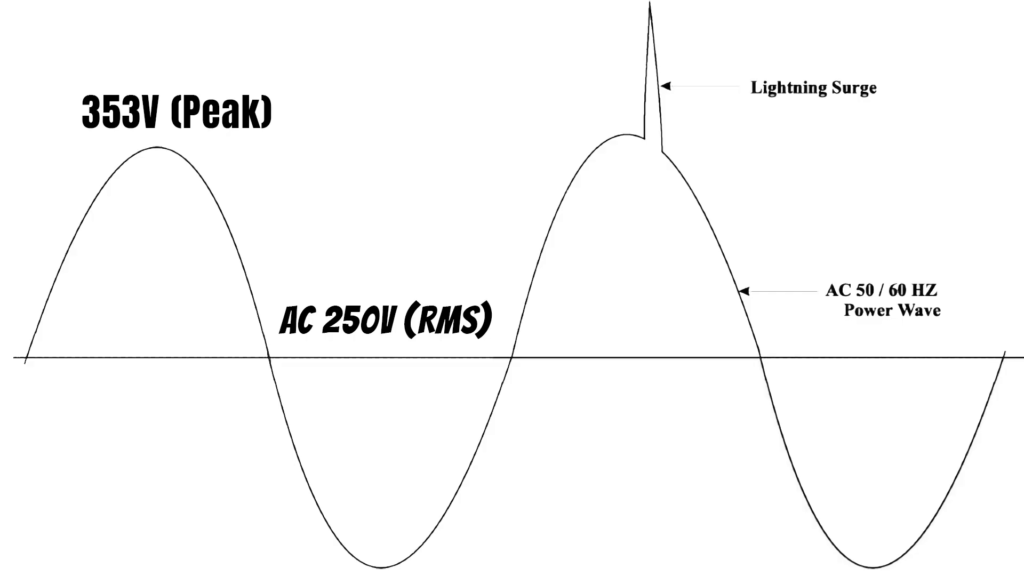
Some people have the misconception that surges only occur when lightning strikes, but that’s not necessarily true. Heavy appliances like air conditioners, heaters, refrigerators, microwave ovens, or large motors can also cause voltage spikes when turned on or off, which are obviously surges. Even if there is a factory nearby and it has large motors, surges can occur when those motors are turned on or off.
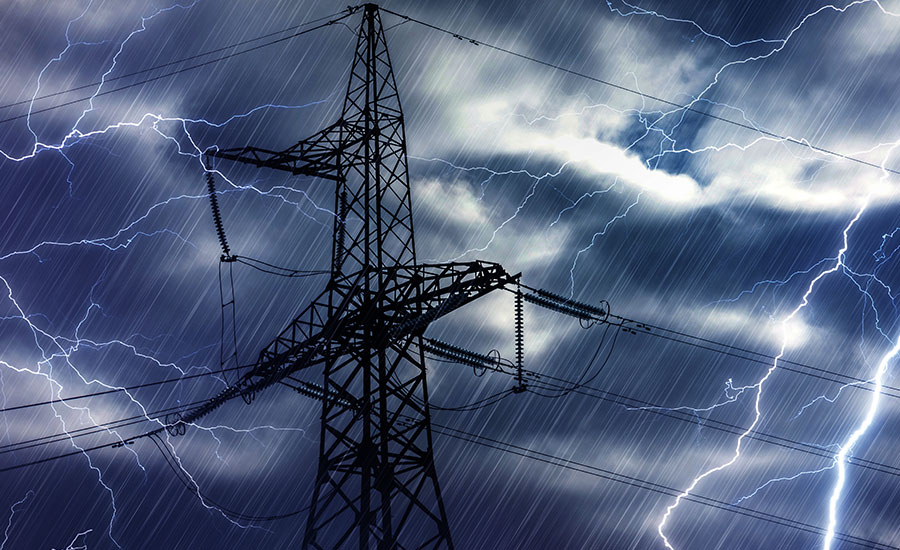
What does a Surge Protector Do?
This is where surge protectors come in. The sole purpose of surge protectors is to delete extra voltage and send excess electricity to the earth. That’s why surge protectors of any type must have an earthing connection. Surge protectors that come with power strip surge protectors or SPDs (surge protection devices) generally cannot protect your devices from lightning. If lightning strikes nearby, you might still get protection, but if lightning strikes very close to your home, your device might not survive, and the surge protector might fail. The best protection is to unplug your electronic devices during a lightning storm.
However, there are some special types of SPDs that can provide protection against lightning, which are also known as type 1 SPDs. We’ll come to those later.
Power Strip Surge Protector: How to Choose the Best One?
Now, if you want to purchase power strip surge protectors, there are a few things to keep in mind. There are five things – clamping voltage, energy absorption, response time, indicator light, and if you want to go for a slightly premium option, then one more feature should be there, performance guarantee. Along with all these, if the surge protector is EU labelled and offers URL certification, then that’s even better.
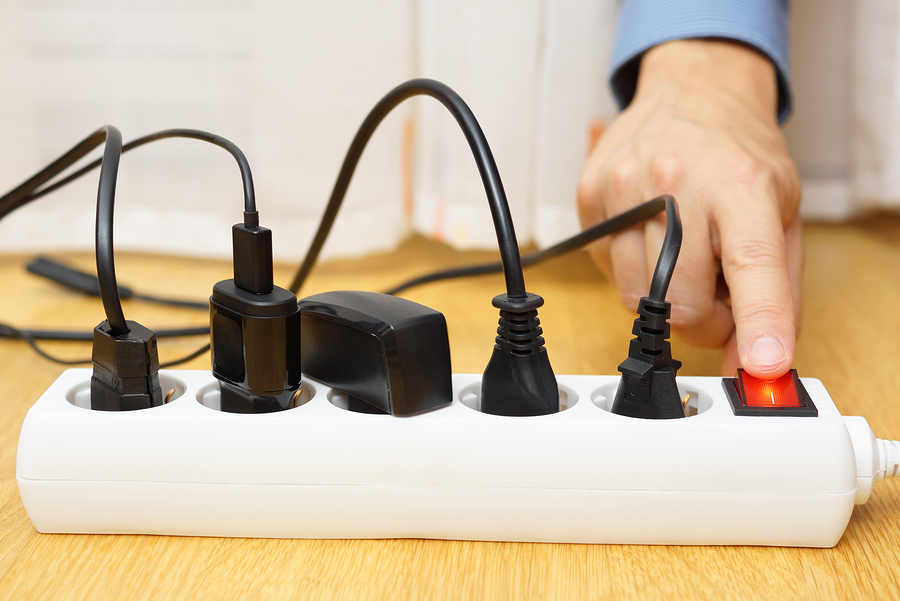
Clamping Voltage
First, let’s talk about clamping voltage. Generally, surge protectors mention a voltage like 275 volts, 300 volts, 400 volts, etc. Clamping voltage means that whatever certain voltage is written, the surge protector will send any voltage spikes above that to the earth. For example, if the clamping voltage is 275 volts, then any voltage above 275 volts will be sent to the earth by the surge protector. If you want to use it at home, a clamping voltage of 275 volts is more than enough, the lower, the better. Don’t prefer less than 275 volts or above 400 volts.
Energy Absorption
Next is the energy absorption, which is measured in joules, sometimes also in watts. It means how much energy a surge protector can absorb, how much energy it can send to the earth. It’s written as 200 joules, 400 joules, 600 joules, etc. The higher this number, the longer the surge protector will last. Along with this, the higher the number, the more expensive the surge protector will be.
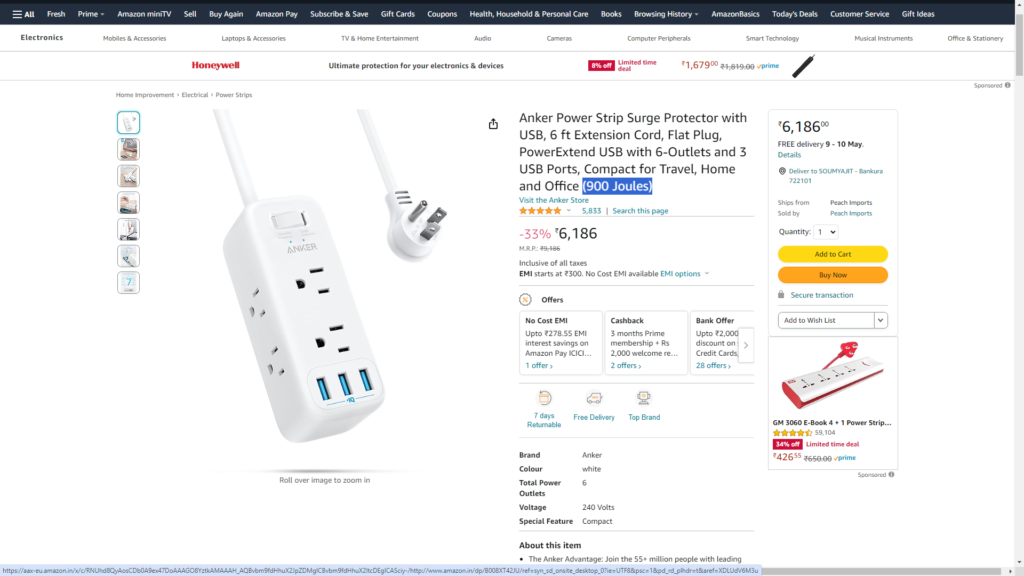
Response Time
Next, response time is very important. Whenever a power surge occurs, any surge protector doesn’t trip immediately, it takes some time, and the delay in this is called response time, it should always be less than 1 nanosecond.
LED Indicator
As an additional feature, surge protectors have an LED indicator that shows whether the protection is active or not. This is even better because when a surge protector fails, the LED stops glowing, letting you know that the surge protector’s life is over.

Performance Guarantee
As I mentioned, if you want to go for a slightly premium option, you’ll also get a performance guarantee with it. If the connected device gets damaged due to a power surge, the company that makes the surge protector will pay for the cost of the device. The maximum amount the company will pay is mentioned like Anker’s power strip surge protector has a maximum claim of 2 lakh dollars.
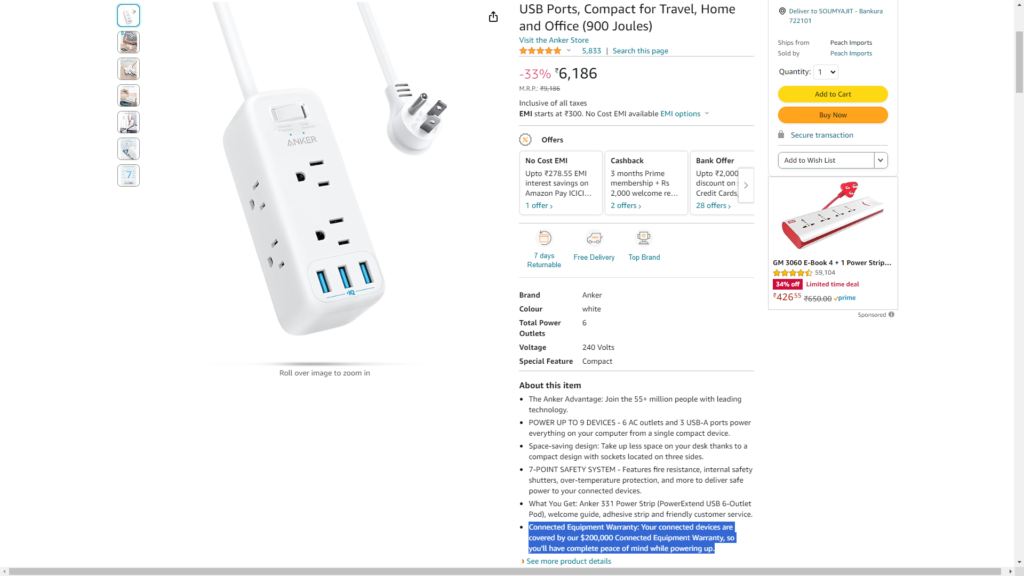
UL Rating
Finally, let’s talk about the UL rating. A good surge protector should have a UL rating. Independent Underwriters Laboratories test a particular surge protector and rate it based on the testing.
What is SPDs?
SPDs, which are Surge Protection Devices installed in our house’s distribution box or switchboard, are generally panel-mounted. There are four types of SPDs available in the market: type 1, type 2, type 3, and type 4. Type 1 SPDs, or Class B SPDs, are always installed in the distribution box and provide protection to the entire house.
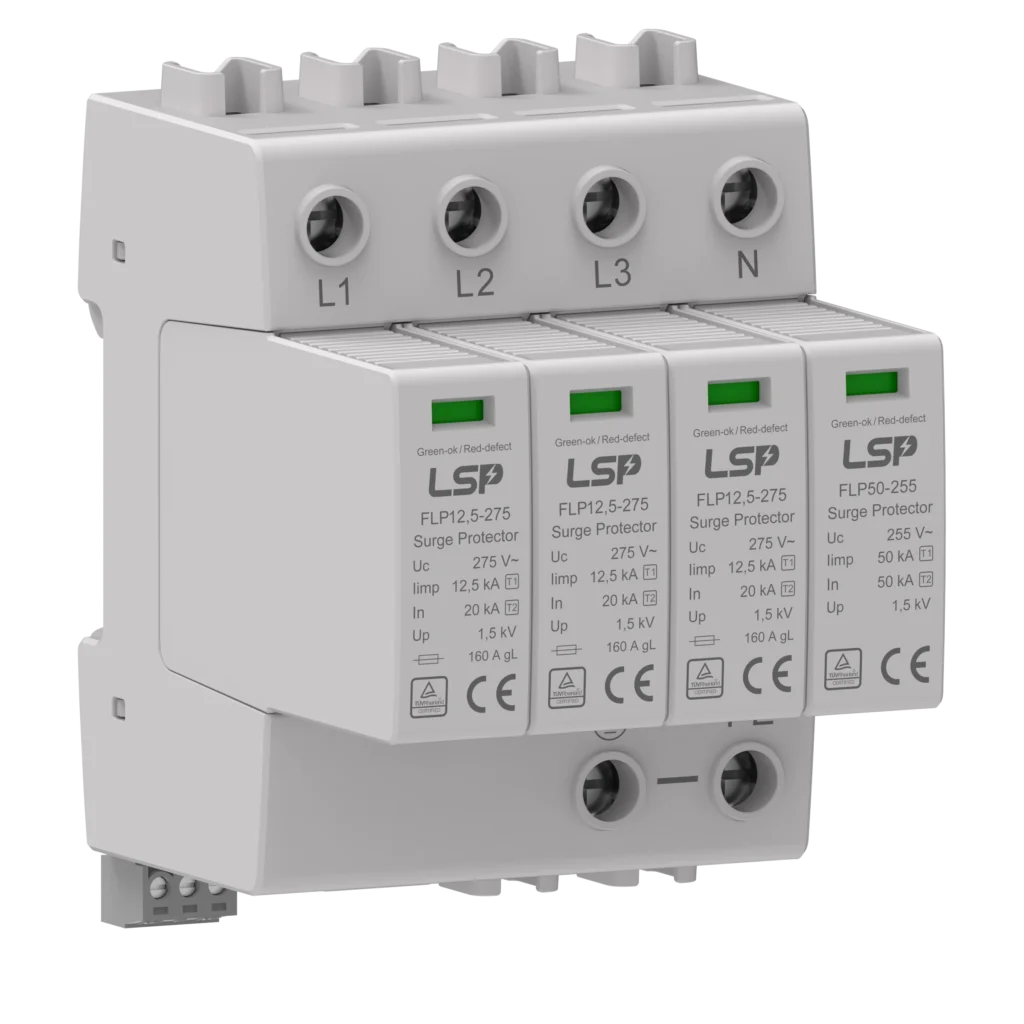
Type 1 SPDs
Type 1 SPDs may not provide good protection against small power surges, they are very effective against lightning. If lightning strikes nearby, type 1 SPDs will protect your home’s electronic devices. Type 1 SPDs are also used in servers, as they can provide protection against lightning and are designed for high energy levels.
Spark gap materials are used in these SPDs. Spark gap material is basically a component in which two pieces of metal are insulated from each other by gas or air. This allows type 1 SPDs to handle intense surges like lightning.
Type 2 SPDs
Type 2 SPDs are used to handle low voltage spikes. These can be surges caused by turning on a motor or other power surges that are not as intense as lightning surges. Type 2 SPDs are installed in the distribution box to provide protection against these smaller power surges. MOVs (metal oxide varistors) are used in these SPDs.
Type 3 SPDs
Next, type 3 SPDs are installed along with expensive electronic devices connected to the switchboard. These also use MOVs.
Type 4 SPDs
Type 4 SPDs are a bit different. You can’t buy them in the form of SPDs. Every electronic device comes with surge protection from a surge protection company, which is called a type 4 SPD.
How to Identify Faulty SPD?
SPDs also have indicators. When the SPD is working properly, it has a green indicator, but if it becomes damaged, the green indicator turns black or red. LEDs are often used, and if the LED is glowing green, the SPD is fine, but if it’s glowing red, the SPD is damaged. When an SPD becomes damaged, there’s no need to change the entire structure. SPD cartridges are available, so only the damaged SPD needs to be replaced, without the need to change the entire set.
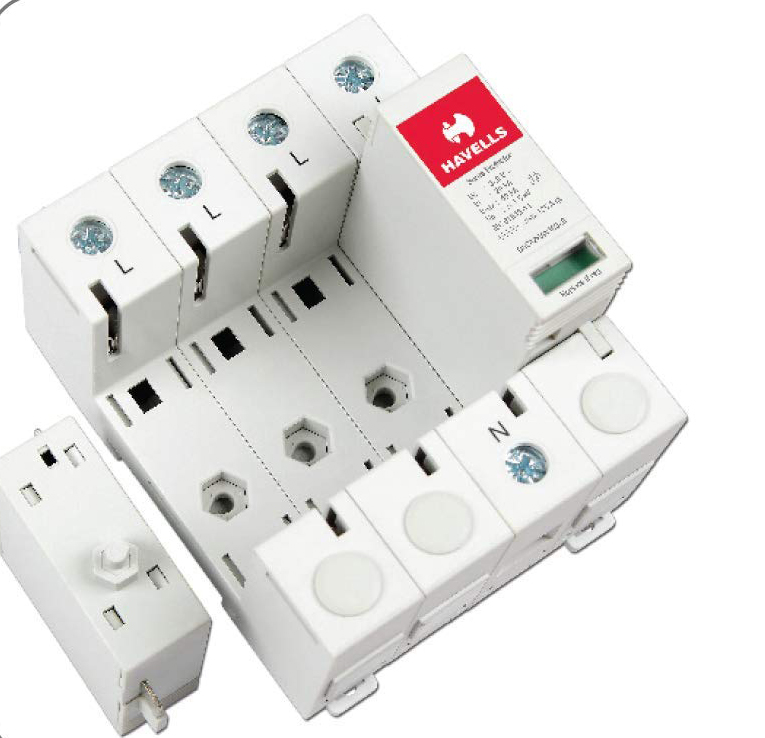
Ratings Of SPDs: What they Mean?
Now, let’s talk about SPD ratings. There are three major ratings: Uc, Up, and Imax. Uc stands for clamping voltage. For example, if UC is 270 volts, then the SPD will send any voltage spikes above 270 volts to the earth. Next, Up, which is the protection voltage, is usually in kilovolts, for example, <= 1.2KV. Along with that, Imax indicates the maximum current that an SPD can handle, for example, 10KA. If the surge voltage is more than, for example, 1.2KV, and the current is also more than 10KA, then the SPD will trip and short-circuit the phase and neutral with the earth.
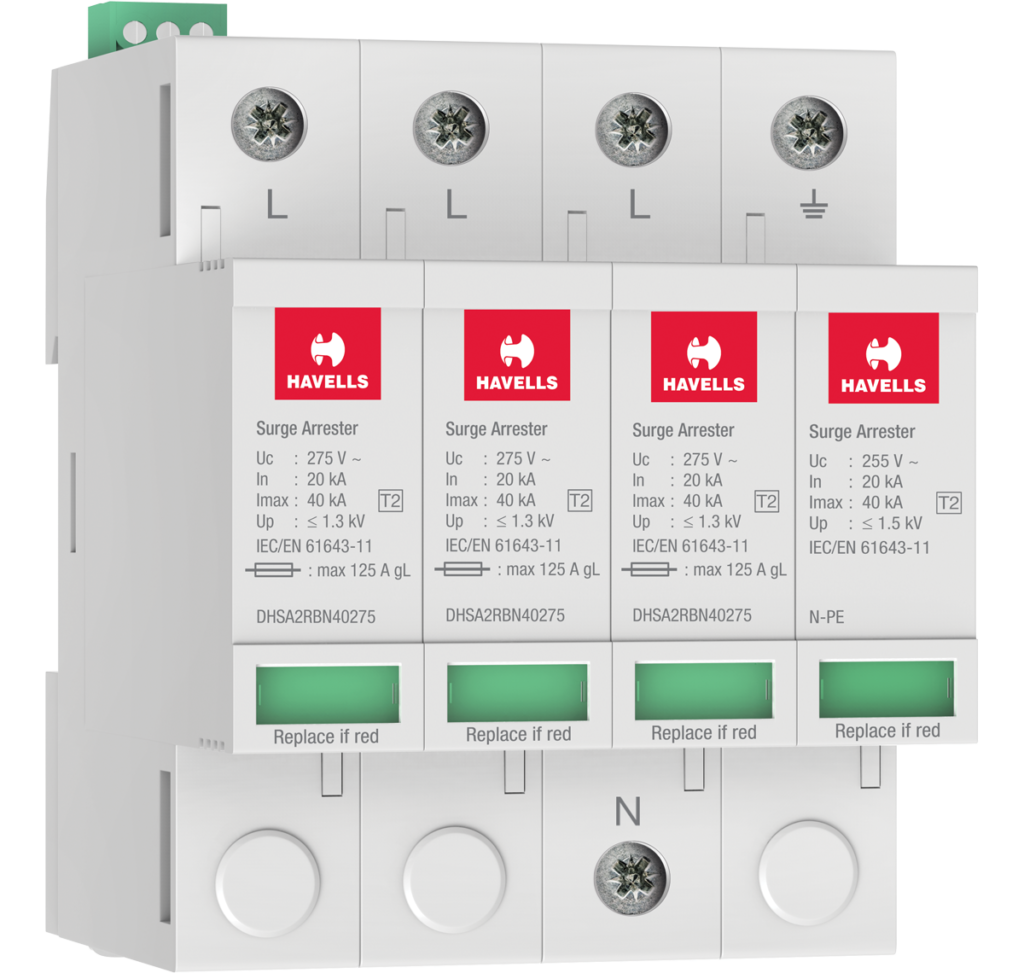
The correct way to install SPDs is that whenever the SPD shorts out, the MCB connected to it will trip, so there won’t be a short circuit, and you’ll get protection from the surge.
By the way, SPDs are available for both single-phase AC and DC. In single-phase AC, you get a double pole SPD and a single pole SPD. In double pole SPDs, there are two SPDs, one connected to the phase and the other to the neutral, and one side to the earth. In single pole SPDs, one side is earth, which is mandatory, but you can connect either the phase or the neutral. However, double SPDs provide maximum protection in single-phase AC. In 3-phase AC, you get 4 pole SPDs.
Don’t Miss: Top 10 Best Sci-Fi Action Adventure Movie
In the Concluding Lines…
In conclusion, surge protectors play a vital role in safeguarding electronic devices from power surges, whether caused by lightning or other sources. Understanding the different types, features, and ratings helps users make informed decisions to ensure optimal protection for their valuable equipment, enhancing safety and reliability.
